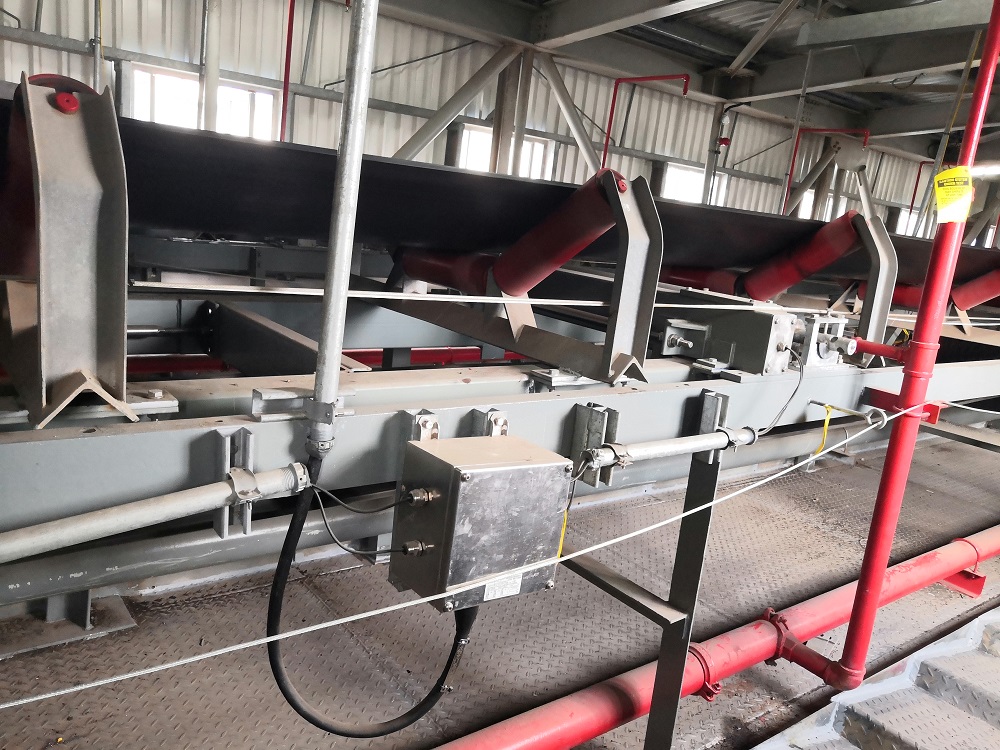The random error of high precision belt scale is very small, but the systematic error is more complicated. Belt scale installation conditions and the level of installation and debugging is the key to use the belt scale, there is a belt scale expert to give a lecture in China said: "belt scale use of the quality of 80% depends on the user installation and maintenance." This is to use exaggerated technique to explain the importance of installation and maintenance, it is true to use the technical content of belt scale in most of the content in the installation and debugging, daily maintenance.
According to the belt scale installation and debugging manual, install the scale in the belt that has been selected in advance to run the raw material delivery system. See xuzhou sanyuan automatic belt scale installation rules. Check all idlers in the weighing area (weighing section and auxiliary weighing section) to see if they meet the requirements. If they do not meet the requirements, they must be repaired or replaced. Calibration of weighing area "laymen" commonly used is to use "three line", xuzhou sanyuan electric automation installation commissioning and technical personnel 13 years experience in installation and debugging adopt "six wire", will be called before and after the great trust roller and the auxiliary roller are adjusted level or slightly high 5 mm, to ensure that the no-load, weighing belt and roller contact is good.
The deflection of the belt varies with the size of the load. The length, width, thickness and material of the belt are different. For single roller weighing, multi-roller weighing, lever weighing, suspension weighing and cantilever weighing, the height difference is rigidly stipulated. Can dynamic zero point stability be guaranteed? With the idlers at the same distance, at the same horizontal line, the belt deflection should be the same, weighed from the original state.

Xuzhou sanyuan automation electrical installation and debugging technicians are using the "six wire system", but also reduce the workload of on-site installation and debugging. Since the belt width is 500mm, use a single line to adjust the weigher weight idler on the same horizontal line as the conveying idler, and adjust the vertical and horizontal limit device of the weigher, so that the weigher is in a free state and not affected by any stress. The adjustment of belt tensioning device to control the sag of belt deflection is very important, it belongs to the system adjustment, and the adjustment of the heavy roller is a local adjustment. The belt conveyor is provided with a helical tension tensioning device to adjust the belt deflection within the tolerance range and to solve the phenomenon of belt deviation. Add 4 columns and support to strengthen the belt conveyor to solve the vibration problem, and correctly complete the wiring of the weighing sensor and speed sensor. The belt circumference is actually measured with a tape measure, and the belt speed is measured three times to get the average value.
A comprehensive analysis of xuzhou sanyuan automation electric co., LTD believes that the purpose of raising the weight idler is to make its idler better contact with the belt, change the initial state of the belt and form the "zero migration". When the belt is loaded with a certain material, the belt will return to the initial state of weighing, using the principle of force and reaction force, that is, the same as the weighing area idler in the balance when the force of 50% in a straight line.

 TEL:133-0520-1772
TEL:133-0520-1772








